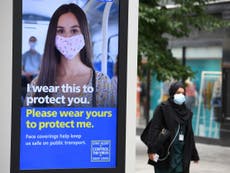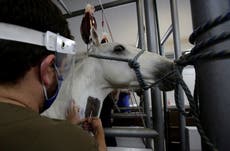The government stripped young people of hope – then blamed them for the second wave
Not only have our leaders doled out confusing and inconsistent advice, but they have also failed to give us a meaningful roadmap for the future

Your support helps us to tell the story
From reproductive rights to climate change to Big Tech, The Independent is on the ground when the story is developing. Whether it's investigating the financials of Elon Musk's pro-Trump PAC or producing our latest documentary, 'The A Word', which shines a light on the American women fighting for reproductive rights, we know how important it is to parse out the facts from the messaging.
At such a critical moment in US history, we need reporters on the ground. Your donation allows us to keep sending journalists to speak to both sides of the story.
The Independent is trusted by Americans across the entire political spectrum. And unlike many other quality news outlets, we choose not to lock Americans out of our reporting and analysis with paywalls. We believe quality journalism should be available to everyone, paid for by those who can afford it.
Your support makes all the difference.The feared second wave of coronavirus infections has become a reality across several European countries. On Friday, France recorded almost 9,000 new daily cases of the respiratory disease, exceeding its previous record of 7,578 cases. On the same day, daily cases in Spain exceeded 10,000 for the first time, and yesterday Spain became the first European country to record a total of more than half a million coronavirus cases. The UK has also seen an increase in cases, and on Sunday the government announced 2,988 new daily cases, the highest figure recorded since 22 May.
The rise in cases across Europe is said to be largely the result of an increase in infections in young people, and in England, a third of all cases recorded last week were among those aged 20 to 29.
This has led to calls from Matt Hancock, the health secretary, urging young people to stick to the rules and observe social distancing to avoid a second wave. At the same time, young people in Leeds have been asked to “recognise their own responsibility” in controlling the virus as house parties and illegal raves persist across the city. Reading the news, you’d be led to believe that young people are responsible for the recent increase in infections. But are they really to blame?
Since the government began to wind down lockdown, it has embarked upon a campaign of mixed messages. Don’t go to work, but do go to work. Followed by instructions to avoid public transport, all while insisting commuters stop working from home so that they can save city centre branches of Pret a Manger.
The rules on socialising have left more people scratching their heads. With one rule for inside spaces and another for outside, people have been confusing the six-person (outside) and the two household (inside) rules, inadvertently breaking them when dining out.
Others have been left confused by the concept of bubbles, not realising that their household can only form a bubble with one other. This means in a house share of two, one of you might be able to sleep with your partner (providing they live alone), while your roommate is expected to keep one metre away from their partner and presumably remain celibate indefinitely.
Yet, “the rules are really clear”, according to Hancock. But if pressed to complete a quiz on them, I’m doubtful that many of us would pass.
In areas experiencing local lockdowns, even more confusion has arisen over the fact that people have been prohibited from having house guests but can still go to pubs. And in England, while you can host a wedding of 30 guests, if you’re pregnant, your partner can’t even accompany you to the hospital.
It’s not simply that the rules are confusing that’s creating chaos, it’s that they don’t make sense. That should concern all of us, because not being able to make sense of the rules is what has led to people not complying with them. So, who is really to blame for a second wave? It’s not young people. It’s the government’s mixed messages.
But beyond that, seeking to scapegoat young people ignores how much lockdown has affected them. School-aged children saw their education completely disrupted. Thousands of university students were forced to say goodbye to their independence and move back with family as campuses across the country closed, their futures entirely uncertain. Younger workers are among those that have been most affected by unemployment as a result of the pandemic. And many young people live in insecure and poor-quality housing, from which there has been little escape through lockdown.
The government’s attempt to present the second wave as the fault of selfish young people who simply won’t follow the rules completely overlooks why some young people have rebelled in the first place: this pandemic has been incredibly difficult for them. When you look at the situation through that lens, house parties don’t look so much like acts of selfishness, but acts of hopelessness from a generation that has completely lost sight and control over their future.
That’s where the issue of messaging comes in. Not only has the government dolled out confusing and inconsistent advice, but it has also failed to give us a meaningful roadmap for the future.
The plans for releasing lockdown have been so focused on the economy and getting schools and workplaces open that the government has failed to speak to the core thing that matters: human connection. Bringing your friendship group together. Having sex. Hugging.
You can’t just keep telling people to follow the rules indefinitely. You have to give them hope. You have to give them a future that matters.






Join our commenting forum
Join thought-provoking conversations, follow other Independent readers and see their replies
Comments